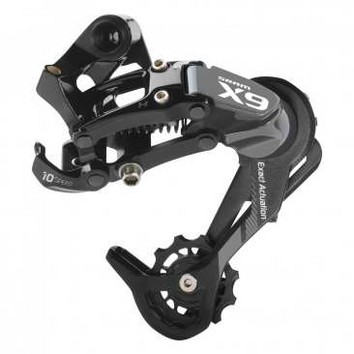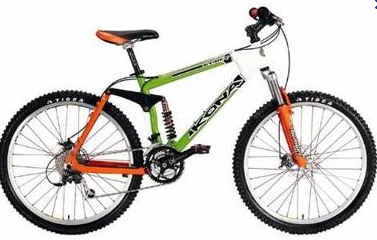 My father in law has a saying, and we hear it often on our regular hiking trips in England. "You see, the weather isn't always sunny here, but one of the things I love most about England is the rain and cold, and I love having the excuse to buy a very expensive Gore-Tex jacket and to wear gators, and a beanie, and gloves, and to use a professional walking pole made from aerospace aluminium to steady oneself on the boggy paths." It's brilliant!
My father in law has a saying, and we hear it often on our regular hiking trips in England. "You see, the weather isn't always sunny here, but one of the things I love most about England is the rain and cold, and I love having the excuse to buy a very expensive Gore-Tex jacket and to wear gators, and a beanie, and gloves, and to use a professional walking pole made from aerospace aluminium to steady oneself on the boggy paths." It's brilliant!
So, his saying is (and I'm sure you’ve heard it before): "There’s no such thing as bad weather, just the wrong clothes" and I love it when he says it.
Anyway, you're probably wondering what this has to do with bike components and all that. Well I think a lot to do with that, because choosing the right drivetrain and shifters is like choosing the right clothes. You wouldn't wear flip-flops and Denim shorts ice fishing in Thunder Bay, likewise, a Sora groupset is really out of place at the Tour de France.
In the bike shop this question comes up constantly, with customers trying to choose an appropriate bike for their needs. We'll skip the "do I need a road or mountain bike?"; it is a question for another day. I would also like to say that it is perfectly possible to ride your local crit with the most entry level no-name Shimano geared bike and have an absolute whale of a time! The joy and passion of cycling is the cycling, not the stuff.
But, there is a big difference across the levels of components in terms of durability, weight and performance. The three main brands: (Shimano, SRAM and Campagnolo) all supply recreational and performance groupsets and a good indicator of a bike's purpose will be reflected in the spec'ed kit.
When it comes to road riding the two most important questions are: How many kilometres are you riding per week? And do you intend to race?
 The average enthusiast will ride up to approximately 60miles/week (100km. For these distances a recreational setup will suffice; for instance: Shimano Sora/Tiagra or SRAM Apex. A bike featuring this equipment will function perfectly, will shift smoothly and is great for the average or beginner rider. The mechanics and ergonomics are virtually the same, apart from a thumb activated cable release and only 9 speed (10, 11 speed is the current road standard) on the Shimano Sora.
The average enthusiast will ride up to approximately 60miles/week (100km. For these distances a recreational setup will suffice; for instance: Shimano Sora/Tiagra or SRAM Apex. A bike featuring this equipment will function perfectly, will shift smoothly and is great for the average or beginner rider. The mechanics and ergonomics are virtually the same, apart from a thumb activated cable release and only 9 speed (10, 11 speed is the current road standard) on the Shimano Sora.
When the distances start to add up it is necessary to step into performance equipment. Riding high mileage weekly with this gear may result in longevity issues.
Forget about weight, unless you are a super lean A-grade whippet I'd suggest visiting the smallest room in the house before riding, rather than paying lots of money for the sake of a few grams.
With equipment like Shimano 105/Ultegra, SRAM Rival/Force or nearly anything Campagnolo, you are getting parts that will last the distance and will shift and brake flawlessly. At this level, chains, cassettes and derailleurs are made from stronger and lighter materials, and can cope with massive amounts of mileage.
These parts are totally acceptable for racing as well, but the pointy end of the field will be using Dura-Ace, SRAM Red and Campagnolo Record. Super light, super performance and super expensive; this is the gear for racing and when money is not a consideration.
The same rules apply for mountain biking. In the shop it is common to get the customer who wants to ride the local trails and is only prepared to spend a few hundred dollars. It is possible to ride any mountain bike off-road, the issue is how long will the bike last, and how long before the customer comes back to the shop with their chain and derailleur having accomplished a perfect loop-de-loop in the rear wheel.
 Bikes with the good gear cost more money! When browsing for a new bike be realistic about your needs and your intention for riding. I have lost count of the customers coming in declaring their intent to ride downhill and freeride and have a grand sum of $500. A cheap mountain bike frame MAY survive, but everything else will be destroyed.
Bikes with the good gear cost more money! When browsing for a new bike be realistic about your needs and your intention for riding. I have lost count of the customers coming in declaring their intent to ride downhill and freeride and have a grand sum of $500. A cheap mountain bike frame MAY survive, but everything else will be destroyed.
For single track trail riding it is very important to use the correct equipment. If not, pack a pair of trainers in your backpack 'cause chances are you'll be walking home. The best choices are: Shimano Deore, SLX, XT and SRAM X5, X7, X9. These components are strong and sturdy and designed for harsh trail riding conditions.
For the regular mountain biker, use XT or X9 if you can afford it. Shimano has designed its trail ready rear derailleurs to tuck in under the cassette no matter which gear is selected. The reduced profile limits the chances of smashing the mech against a rock or other trail obstacle. SRAM’s X7, X9 and X0 derailleurs are well known for their robustness and solid shifting in extreme conditions.
Top of the line parts like XTR and X0, XX are the pinnacle of mountain bike components and the price reflects this. If you can afford it, buy it!
Be aware that groupset parts can be interchangeable within brands. That nice bike may have an XT rear derailleur, but check the shifters and front derailleur as well. It is good to be aware of exactly what you are purchasing.
This is intended only to be a basic guide. Remember; the running gear components are like your walking boots when hiking - an important item, no doubt, but when the blizzard comes the best hiking boots in the world are pointless if you're only wearing a singlet. Likewise, that freeride bike with X0 components is pretty useless if you want to go cross country racing!
So remember the saying "there is no such thing as bad weather, just the wrong clothes."


